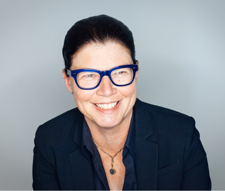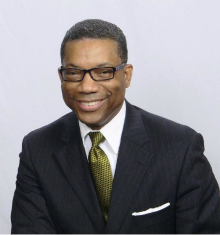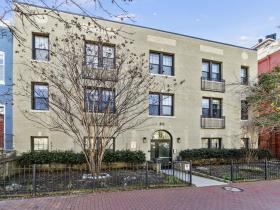What's Hot: The 4 Projects in the Works Near DC's Starburst Intersection | A 153-Room Aloft Hotel Pitched For Mt. Vernon Triangle
 A Conversation With the Team Determining the Feasibilty of the Georgetown Gondola
A Conversation With the Team Determining the Feasibilty of the Georgetown Gondola
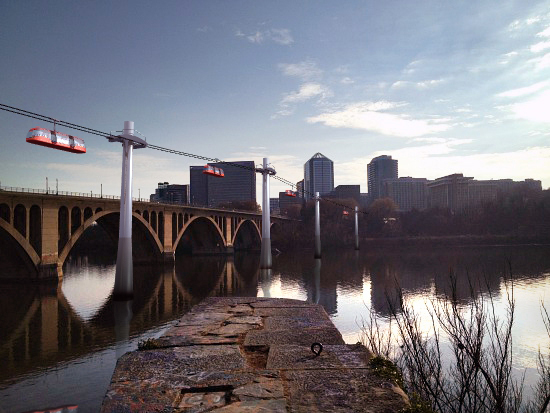
A gondola connecting Rosslyn to Georgetown. Rendering created for UrbanTurf by Capital Pixel.
As the conversation about expanding the H Street streetcar into Georgetown continues, it’s important to remember that public transit may land in Georgetown from the opposite side of the Potomac as well.
A month after ZGF Architects was selected by the Georgetown-Rosslyn Gondola Executive Committee to provide recommendations as to the feasibility of an aerial gondola between Georgetown and Rosslyn, ZGF principal Otto Condon spoke to UrbanTurf about what the process entails and what comes next.
This interview has been edited for brevity and clarity.
UrbanTurf: Is the feasibility study a step-by-step process, where each component (transport methods, financial, real estate, design assessment, etc.) depends on completion of another or are each of the partners in the study completing their analyses concurrently?
Otto Condon: We really approach design holistically, so as we’re looking at potential alignments, potential station or stop areas, it’ll really be done in an integrative fashion with the consultant team. How a stop might land on the ground and where the access is will have influence on its ridership. And so that will be a very integral part to how we will be looking at alternatives to test feasibility.
We will take the same approach with economics. With Partners for Economic Solutions, who we’ve worked with on several projects, we will look at how it can be incorporated into the existing land use, whether it might be a leverage for enhancing development activity, which can then have a great influence on just the general context of the station area.
story continues below
loading...story continues above
UT: What are the specific early steps that the team is working on now to determine the gondola’s feasibility? Have any major obstacles presented themselves yet or have you eliminated any specific elements thus far?
Condon: No, we’ve not gotten into the design. We’re just starting to ramp up, and as we start to kick off with the executive committee, there’ll be a series of meetings with the stakeholders, which were all the contributors to the study, and we’ll have some public meetings.
Considering that the contributors were city agencies, business groups, and development groups, we want to capture as many criteria as we can in terms of testing feasibility. That means economics, environmental issues, generally ensuring that it is an enhancement of the public realm, and ultimately it has to be a transportation tool, to make it the most successful.
Getting the advice from some of the various approval agencies, in terms of really asking them, what needs to be done to make this a good idea, will be critical.
UT: Tell us a bit about the aerial tram in Portland, Oregon that ZGF worked on, and the decision-making process that went into its particular structure and design.
Condon: It actually started as a streetcar study, looking at how to connect the downtown waterfront to the Oregon Health and Science University, which is up on a hill. Because of the geography, it was tough to get a streetcar up there.
I can’t even tell you when the idea of an aerial connection first came up, but we started to look at the feasibility of it, and in terms of the alignments and the sites we looked at, we realized there [was the possibility] for [the route to be] a straight shot. But it required going over a temple and a Catholic church, and one of the first lessons was, in order to make the aerial tram work, it’s best to keep it within the public right-of-way.
So we worked on that, it was adopted as part of the plan, then it moved forward. The first feasibility studies were done in the late ‘90s, and I think it opened in 2006.
When you look at where the station lands in the Portland aerial tram, it actually informed where the streetcar alignment was shifted in order to create as seamless a transit connection as possible. Now there’s a bike corral at the base of the aerial tram, which I think is one of the largest corrals in the state.
UT: Using the Portland tram as an example, what would a potential timeline be from completion of the feasibility study for the Georgetown gondola, assuming that there is a clear and economic way to move forward with the project? How long to procure, construct, deliver, etc.?
Condon: That is definitely one of the things we’ll be answering in the feasibility study. We’ll be looking at design, then the construction time, the permitting process, and the funding process. All those will play into how long it takes. So, I don’t want to artificially put a term on it, but I will say that the feasibility study is going to provide that information on the projection of what it’ll take to implement.
UT: Admittedly it’s early, but what are the indications so far as to whether or not a gondola will be feasible?
Condon: It’s definitely early to say. We’ll be looking at a goal-based feasibility assessment, really defining clearly at the beginning what everyone’s measurement of success is in terms of ridership.
We’re not here to sell a gondola, we’re here to provide an objective study. Ultimately, if it’s a good idea, the stewardship of all the stakeholders will hopefully move it forward.
UT: When you guys were chosen to lead the study, there was a 5-month timeline for you to be able to deliver your conclusions on the feasibility; is that still what you’re looking at?
Condon: Yes, that’s our target right now and we’re still working on the schedule, but there’s been a lot of momentum since 2013 when it was proposed as part of the Georgetown plan. I think the RFP actually said eight months, and…we really wanted to do it in a very efficient and effective manner, so we are still working on that timeline.
Look out for ZGF to begin holding public meetings to solicit public opinion on the Georgetown-Rosslyn gondola in the coming months, and go here to learn more about the gondola.
Correction: An earlier version of this article misidentified the Portland aerial tram’s bicycle transit connection as a “trail”. It is actually a bike corral, or valet for parking bikes.
See other articles related to: georgetown, georgetown 2028, georgetown bid, georgetown gondola, zgf architects
This article originally published at https://dc.urbanturf.com/articles/blog/zgfs_otto_condon_catches_urbanturf_up_on_the_gondola_feasibility_study/11286.
Most Popular... This Week • Last 30 Days • Ever

In this article, UrbanTurf looks at the estimated annual maintenance costs associated... read »
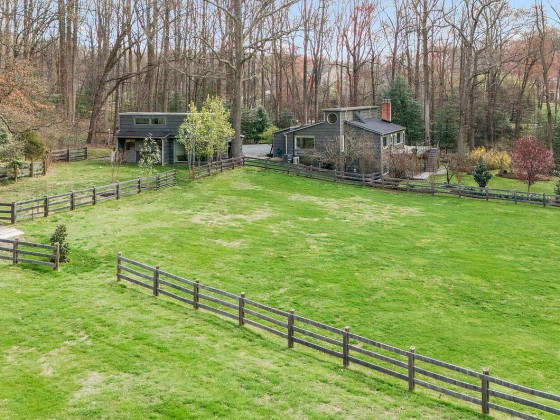
Today, UrbanTurf is examining one of our favorite metrics regarding competition in th... read »
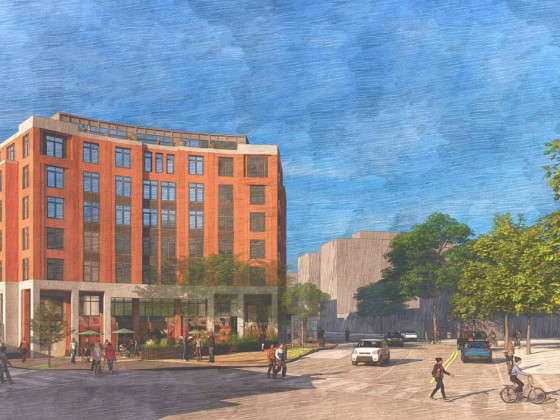
Another concept has been unveiled for one of DC's most contentious development sites,... read »
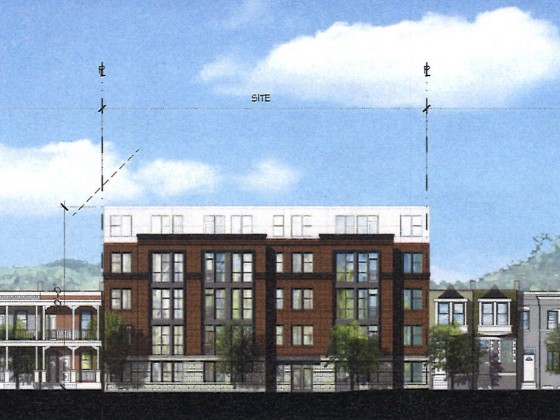
The residential development in the works along Florida Avenue NE is looking to increa... read »
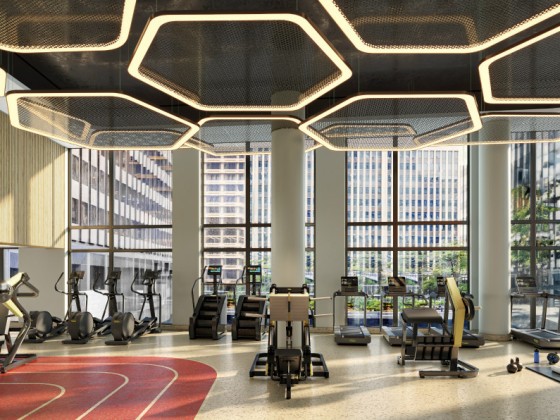
Renter demand has continued to push Class A apartment rents in the DC region up this ... read »
- What Are the Annual Maintenance Costs When You Own a Home?
- The 6 Places In The DC Area Where You Aren't The Only One Bidding On a Home
- A First Look At The New Plans For Adams Morgan's SunTrust Plaza
- 46 to 48: The Biggest Project In Trinidad Looks To Get Bigger
- How Much Did DC-Area Rents Rise At The Beginning of 2024?
DC Real Estate Guides
Short guides to navigating the DC-area real estate market
We've collected all our helpful guides for buying, selling and renting in and around Washington, DC in one place. Start browsing below!
First-Timer Primers
Intro guides for first-time home buyers
Unique Spaces
Awesome and unusual real estate from across the DC Metro

